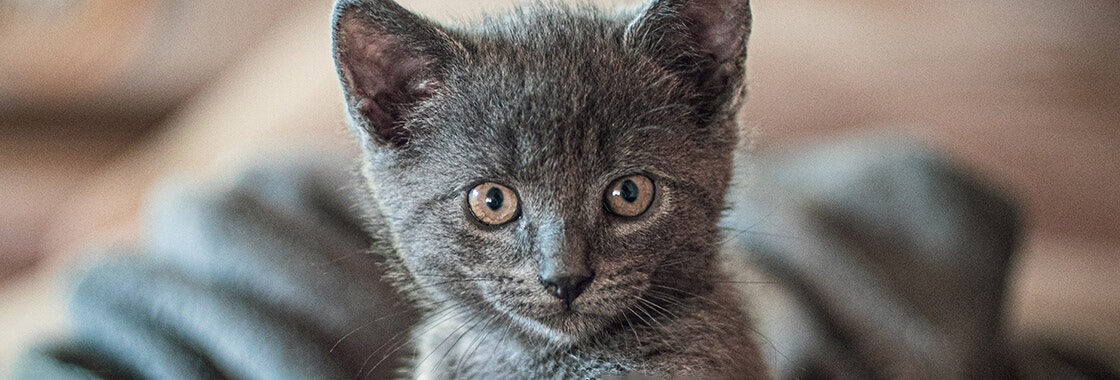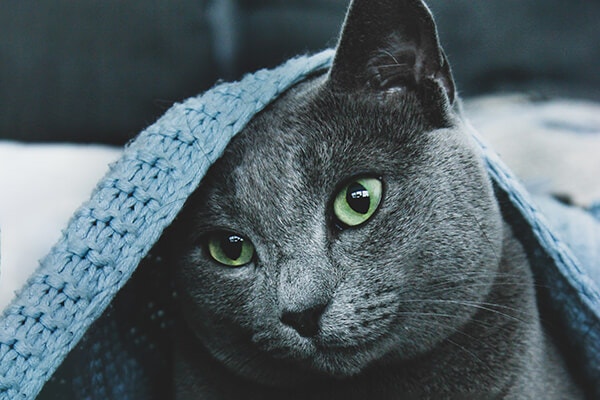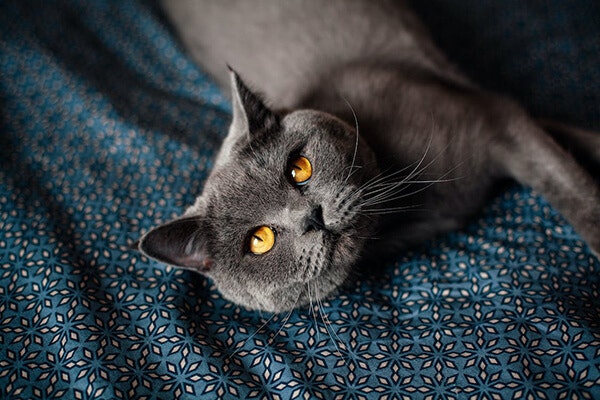How often should you feed your kitten?


Share
‘How often do you feed a kitten?’ and ‘How much should my kitten eat?’ are two burning questions we’ve all had when excitedly preparing for the arrival of the newest and smallest member of the household. Here you will find the answers along with the best times for kitten feeding and the ‘watch out’ kitten foods that should be avoided.
How much food does a kitten need each day?
Age, breed, activity level and the type of food chosen all influence how much food you should feed your kitten. You should always follow the guidance on the kitten food label closely. Your chosen kitten food will tell you how much a kitten should eat (usually given by your kitten age). Just divide the amount by the number of meals you are giving each day to calculate the quantity your kitten will need for each meal.
At 8 weeks, a kitten will need about 3-5 pouches of soft-textured wet kitten food per day, spread evenly over 4-5 small, regular meals. A kitten pouch normally contains around 85g of food but can vary according to brand. If you choose to introduce some dry kitten food, or prefer a mixed diet, omit a wet pouch and replace it with 20-25g of dry food.
The chart below provides guidance on how often to feed a kitten as well as how much to feed a kitten, based on feeding wet kitten food. It should be used as an average estimate and used in conjunction with the recommended amounts to feed your kitten on your chosen food label.
| Kitten Age | Kitten feeding habits | Recommended style of feeding | Number of meals | Amount of wet kitten food |
| Up to 1 month | Drinking mother’s milk | No additional feeding required. | n/a | n/a |
| 1-2 months | Weaning on to solid, dry and wet kitten food | Free feeding with unlimited food. *Moistening the dry food can make it easier to eat. | Food always available* | Top up as required* |
| 2-3 months | Solid wet and/or dry food | Introducing meal times. *Moistening the dry food can make it easier to eat. | 4-5 meals per day | 3-5 servings of wet kitten food |
| 3-6 months | Solid wet and/or dry food | Cement meal routine | 3 meals per day | 4-7 servings of wet kitten food |
| 6-12 months | Solid wet and/or dry food | Establish lifetime habits | 2 meals per day | 4-7 servings of wet kitten food |
* Free feeding is based on the principle that kittens will eat whenever they are hungry as they transition to solid food, just as they got milk from their mother on demand during their first month.
What are the best times to feed my kitten?
Consistent feeding times with regular intervals is a good idea when you are thinking about how often to feed your kitten. If you start by mirroring our human habits with 3 meals a day being breakfast, lunch and dinner, you can then add on an extra one or two meals if required, spacing them out accordingly. For example, if you have a younger kitten and 5 meals a day are needed, you can add a mid afternoon meal and an additional supper later in the evening.
Should I let my kitten eat as much as they want?
There is a balance between giving kittens enough food to fuel rapid growth while not allowing them to become overweight through overfeeding. Kittens younger than 3 months can be ‘free fed’ whereby you leave out an unlimited amount of food all day long and let them graze on it naturally. For many kittens, allowing them to eat as much as they want works well as they self-regulate food intake. For others though, the temptation to gorge on food can lead to the risk of obesity. It’s best to try free-feeding and assess whether it suits your kitten. As they get older, from 3-6 months, meal regulation is more important. Follow the guidelines on your kitten food as to the recommended amount. If still in doubt, you can also weigh your kitten (or ask your vet to do this) as weight provides an accurate guide to the amount of food your kitten needs each day.
What are the pros and cons of free feeding kittens?
‘Free feeding’ stops young kittens eating too quickly and getting distended tummies. Greedier kittens, however, can overfeed and put on too much weight using this method. Some owners leave a bowl of dry food out for their kitten (moistened if they are under 8 weeks), while introducing mealtimes for wet food. It is therefore best to test, watch and learn about the individual habits of your kitten and discover what suits them best, making sure you monitor free feeding as your kitten’s pet parent. You can then decide whether ‘free feeding’ is right for you and your kitten.
Foods not to feed your kitten
When thinking about what to feed a kitten, it might seem logical to supplement their diet with leftover human food. It’s crucial to remember though, that kitten’s have a different food tolerance to us. They need particular nutrients that human food will either not contain or not be present in the right quantities, plus some food can even be poisonous to kittens and cats.
Foods that are dangerous for a kitten, or an adult cat, include onions, garlic, chocolate, grapes, raisins and caffeinated soft drinks. Raw food, whether this is meat, liver, fish or even eggs is also not advised as it can contain bacteria harmful to kittens. Even adult cat food is not suitable for kittens as their nutritional needs are so specific.
Surprisingly, milk and dairy products are also a definite ‘no’ as kittens and cats are largely lactose intolerant. The only exposure kittens have had to milk is from their mother and this is for just a few weeks. A kitten’s stomach is therefore not genetically designed to process dairy milk (or indeed any dairy milk substitutes) as they grow into an adult cat. To find out more about the right food to meet your kitten’s nutritional needs, take a look at our article, ‘What should I feed my kitten’.
How often should I feed my kitten wet food?
The amount of wet food to feed your kitten depends on their breed and age. At 8 weeks, a rapidly growing kitten will need 3-5 pouches of wet food per day which means you will be feeding them every 2-3 hours. By the time your kitten reaches 6 months of age, their growth rate will have slowed down and meals will reduce to between 2-4 per day. These amounts will approximately halve if you decide on a combination diet of wet and dry food. You may find our article ‘Wet vs dry cat food: which is better?’ helpful in making this decision.
It’s obviously important to take your own routine into account when asking how often you feed a kitten. It might be that you want to ‘free feed’ if you are out at work during the day, or you may want to look into buying an automatic feeder, so your kitten has regular mealtimes. It is always a good idea to leave a little more kitten food out at night and again for their breakfast, to cover the gap in their feeding.
Find out more about what to feed kittens and the difference between kitten and cat food to ensure your kitten has the best possible diet to meet their nutritional needs.



